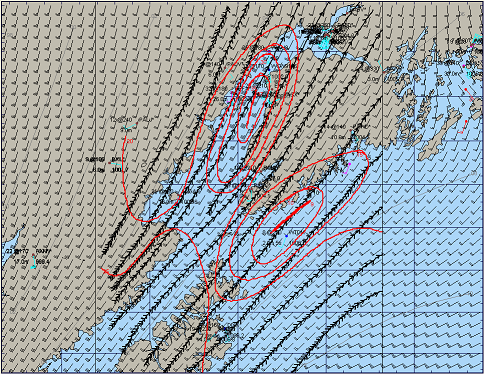A core
research priority at Oceanweather (OWI) is development of analysis
systems to produce the most accurate marine surface wind
fields possible of both discrete historical events on a
regional scale and of basin-scale or global continuous multi-year
wind fields. The research has addressed a wide variety of
topics ranging from study of systematic and random errors
of various data sources (ships, moored buoys, offshore platforms,
coastal stations, various satellite sensors), to a quantification
of the error structure of wind fields produced as a part
of global atmospheric reanalysis projects.
OWI's
approach to development of wind fields is basin-dependent
with focused attention to the storm and weather systems
driving extreme conditions. Source atmospheric fields from
regional and global reanalysis projects are evaluated against
available in situ and satellite data to determine their level
of skill and bias. OWI employ a variety of methodologies
including statistical downscaling, dynamic downscaling (utilizing
the Weather Research & Forecast model for instance),
tropical model overlay (see Tropical
Modeling) and manual kinematic analysis of ocean winds
to produce high-quality wind forcing required by ocean response
models.
The
direct kinematic analysis of wind fields from wind data
has been greatly facilitated by Oceanweather's Interactive
Kinematic Objective Analysis system (IOKA), which utilizes
a unique graphical interface developed at Oceanweather called
Wind Workstation (WWS). Some degree of kinematic analysis
is almost always required for accurate wind fields, particularly
for the most extreme storms. Oceanweather has worked in
nearly all ocean basins worldwide and its methodologies
have been validated in the open literature as part of university
projects as well as in Joint Industry Projects and individual
hindcast studies.

Example
kinematic streamline and isotach analysis in Cook Inlet,
Alaska
Oceanweather's
wind fields are recognized by the international scientific
community as the most accurate which may possibly be derived
from a given database, and are often used as "reference"
fields in the analysis of data acquired in major
international field programs and associated ocean response
modeling experiments.
